From Duke-Elder to the Arclight Project: 100 years of pioneering eye care
Dr Andrew Blaikie of the School of Medicine and Andrew King of Andrew King Opticians explain how Sir William Stewart Duke-Elder (MA Natural Sciences, BSc Physiology, 1919) – alumnus and ophthalmologist to two prime ministers – became known as the founder of the modern field. On the centenary of his graduation from St Andrews, we reflect on his legacy and how it has been preserved in the University’s Arclight project.
In the world of ophthalmology, few names resonate with the same depth and reverence as that of Sir William Stewart Duke-Elder. Not only was he the personal ophthalmologist to two British Prime Minsters and surgeon oculist to British royalty – he was also the first ophthalmologist to be knighted. His journey from a small village north of Dundee to establishing the Institute of Ophthalmology in London illustrates his incredible impact on the field of eye care. And now, a century after his graduation from the University of St Andrews, we acknowledge his pivotal role in fostering the beginnings of modern ophthalmology with his legacy being preserved in the School of Medicine’s Arclight Project, a ground-breaking social enterprise aimed at combating global blindness.

The St Andrews years
As the middle son of a Free Church minister, Duke-Elder’s academic pursuits found their fertile ground at St Andrews. After leaving Morgan Academy in Dundee as Dux he secured a scholarship in 1915 to study at the University. This was to be the beginning of a lasting relationship with St Andrews, where he went on to earn a BSc in Physiology and MA (Hons), an MD then a DSc for separate dissertations on intraocular pressure. He graduated with a medical degree in 1923. During his time in the medical school, he became president of Bute Medical Society and in 1950 was awarded a Doctor of Laws (LLD) as part of St Salvator’s 500th anniversary celebrations.
The laureation from his LLD graduation ceremony read: “Duke-Elder, legendary even in his student days, presents in his professional life such an array of accomplishment, that fantasy herself is dismayed.”
As an undergraduate, his potential soon came to the attention of Sir John Parsons FRS (1863-1957), a leading ophthalmic surgeon at University College Hospital, London, and at the world-leading Moorfields Eye Hospital. Sir John already had a global reputation for revolutionary research into ocular physiology and he invited Duke-Elder to join him.
Success followed as Duke-Elder moved through the ranks at Moorfields to become a permanent consultant in 1928 – only five years after graduating. His prodigious writing and research activities quickly made him a renowned figure in the profession. Duke-Elder’s eminent career progressed through writing and teaching the next generation, making a lasting contribution to the field with the ground-breaking seven-volume Textbook of Ophthalmology.
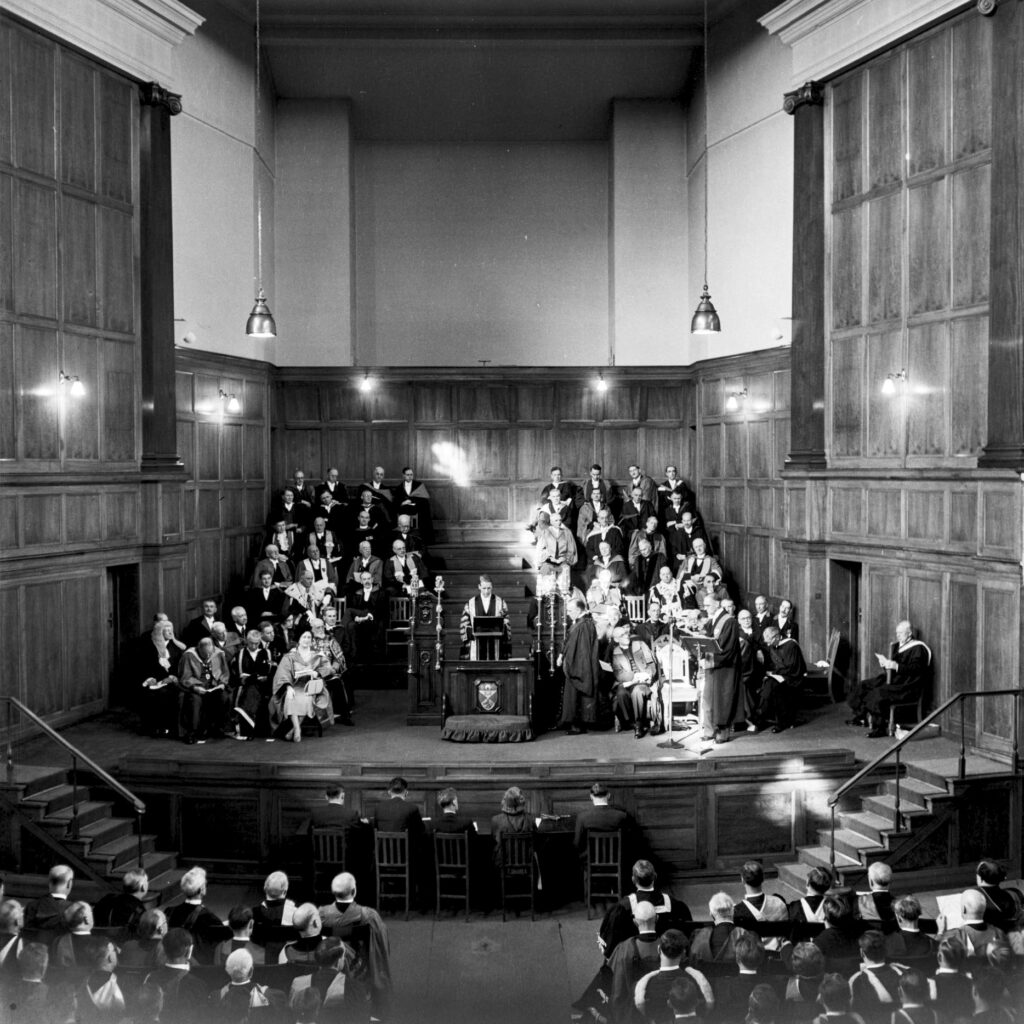
Ophthalmologist to prime ministers and royals
However, Duke-Elder’s prowess was not restricted to medical circles. His surgical brilliance was soon solicited by Downing Street. In 1932 the prime minister Ramsay Macdonald was diagnosed with glaucoma and turned to Duke-Elder for salvation. After successful surgeries on both eyes, the fellow Scotsman knighted Duke-Elder the following year.
His proficiency didn’t go unnoticed by the crown, either. Serving as the surgeon oculist to a trio of monarchs – King Edward VII, King George VI, and Queen Elizabeth II – his career was adorned with accolades, most notably the Knight Commander of the Royal Victorian Order and the Knight Grand Cross in 1958.
Supporting sight and sound: The Arclight Project
While serving in the Royal Army Medical Corps during the second world war, Duke-Elder was instrumental in ensuring that all military personnel received eye examinations and spectacles where needed. This ethos of accessible eye care – so deeply embedded in Duke-Elder’s philosophy – now finds resonance in the current pioneering Arclight Project at St Andrews. The Project’s goal of widening access to eye (as well as ear) care continues Duke-Elder’s legacy as the team develops frugal yet highly portable eye and ear diagnostic and training packages with the solar powered Arclight device at its heart. The Arclight is a frugally engineered low-cost direct ophthalmoscope, anterior segment loupe and otoscope that allows both community and hospital-based healthcare workers to perform comprehensive eye and ear examinations. There is now a strong and growing scientific evidence base for the package that demonstrates it to be just as good as traditional more expensive tools in the diagnosis of all the common causes of blindness and deafness seen in low resource settings.
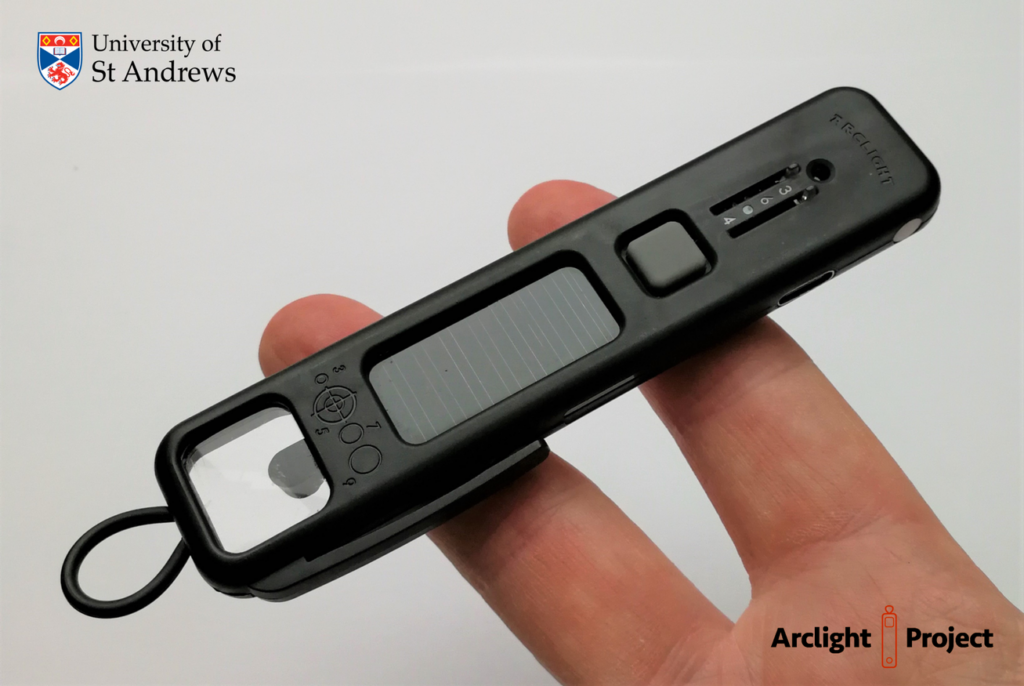
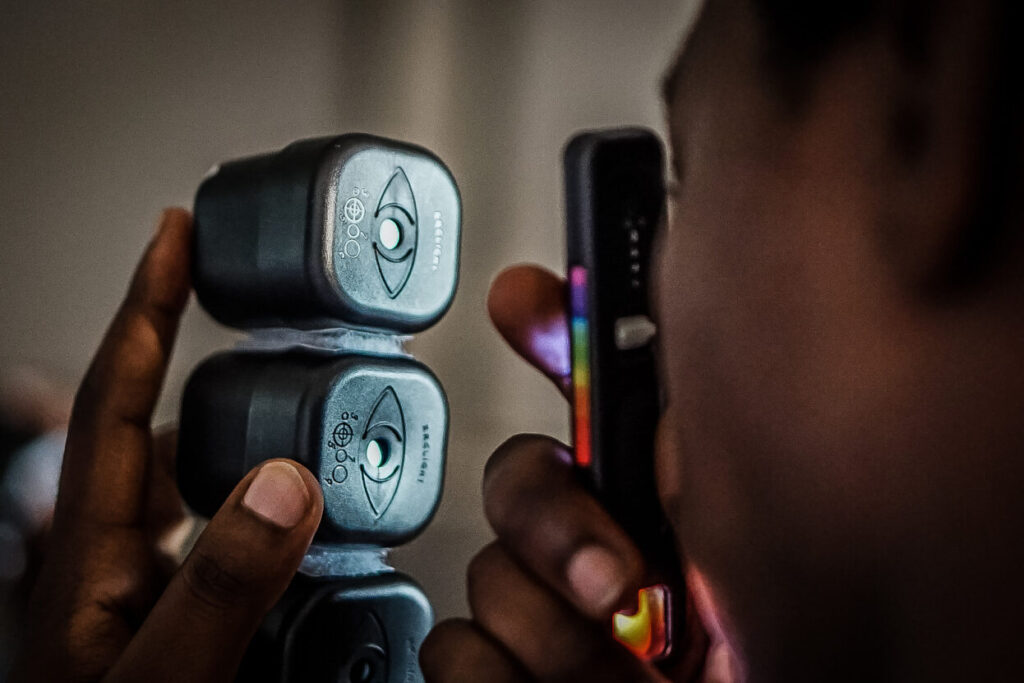
The connections go deeper still: Duke-Elder’s doctoral thesis at St Andrews focused on intraocular fluid equilibrium while the Arclight Project recently developed a tonometer called the Newton for glaucoma screening in resource-poor settings. Thanks to funding from Glaucoma UK, this project is about to enter initial evaluation in Uganda and reflects the seamless integration of Duke-Elder’s foundational research with modern-day innovations – a testament to the continuity of excellence at St Andrews.

Spreading the word
The initial Arclight was created ten years ago by William J Williams with funds from the Fred Hollows Foundation, and the social enterprise has been established in the School of Medicine since 2019. This enables those working in low to middle-income countries to equip, train and empower health workers of all grades to confidently diagnose and manage eye and ear disease.
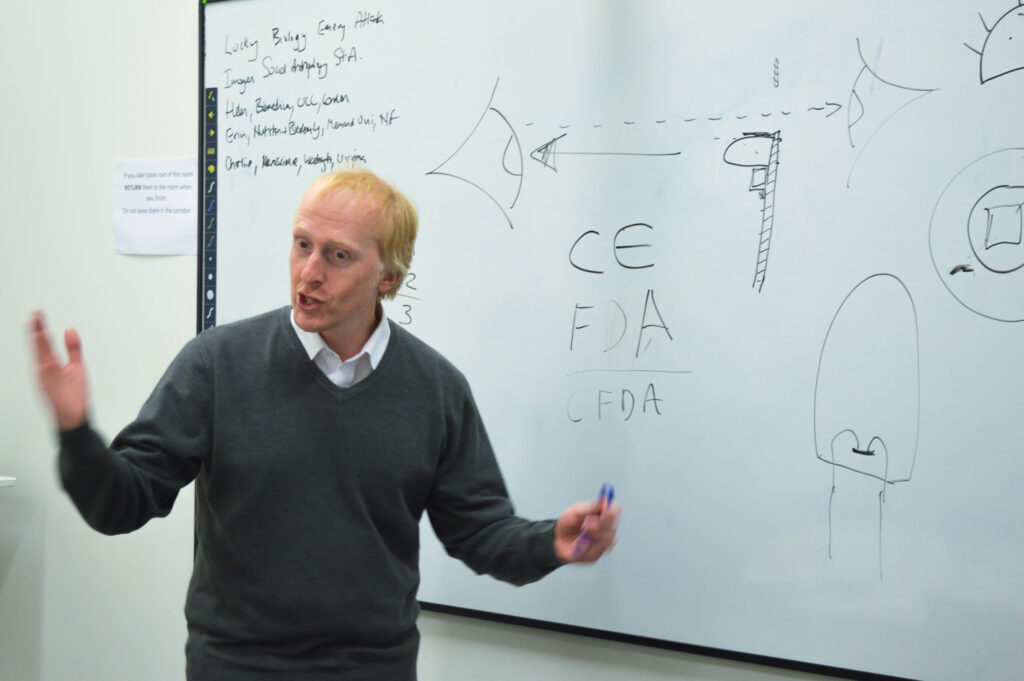
There are estimated to be around 285 million visually impaired people in the world and 360 million hearing impaired, with most cases considered preventable or treatable if diagnosed promptly. The relevance of the Arclight Project and its focus on training and equipping at the level of the community cannot be overstated.
So right now, it’s about spreading the word amongst NGOs, Ministries of Health and policy makers. By engaging globally and educating as many health workers as possible in the use of the package, it is hoped that the University’s support for the Arclight Project will make a tangible impact over the next decades. With funding from the Ulverscroft Foundation and the University the team will be releasing a new device called Holo later this year, which is ideally suited to screening for diabetic retinopathy and blindness in premature babies. These are two of the major growing causes of blindness in urban centres in low- and middle-income countries.
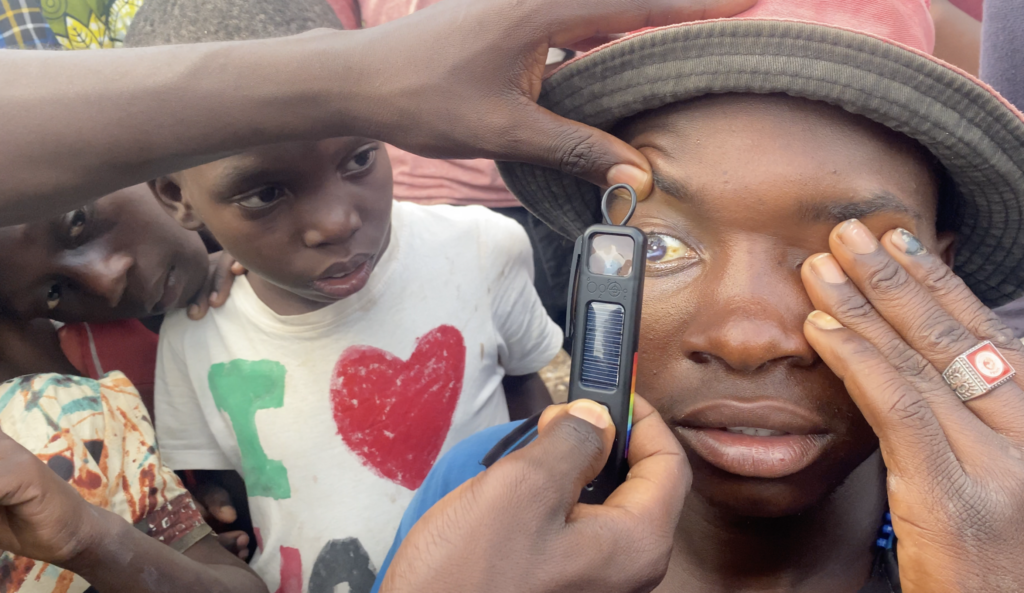
It’s an exciting advancement for healthcare in countries where it can potentially make an important difference to so many lives. It’s also an exciting project for the University as we continue to work together to widen access to this much-needed frugal yet effective technology.
When better to celebrate the milestones reached than 100 years on from the graduation of one of ophthalmology’s most respected figures, and from our own alma mater, too?
Watch how the Arclight Project can transform lives in this video: Arclight in India
Hear Dr Blaikie give an update on the Arclight Project.
For more information and to support the Arclight Project, contact [email protected].
With sincere thanks to Andrew King, Ophthalmic Optician and owner of Andrew King Opticians near Glasgow, for his extensive research into Duke-Elder’s life.